M.P. Evison, O.M. Finegan and T.C. Blythe,
Computerised 3-D Facial Reconstruction

Computerised 3-D Facial Reconstruction: Research Update
M.P. Evison,
Department of Forensic Pathology, The University of Sheffield,
O.M. Finegan,
Department of Archaeological Sciences, The University of Bradford, and
T.C. Blythe,
Research School of Archaeology and Archaeological Science, The University
of Sheffield

Introduction
In issue 1 of assemblage we presented a feature article on our research in computerised three-dimensional facial reconstruction (Evison 1996). Readers are referred to that publication,
and to Prag and Neave (1997) and Tyrrell, et al. (1997), for introductions to facial reconstruction and
computerisation. Here we would like to give an update on our research in progress and introduce some
of the 3-D prototype facial reconstructions we have developed.
The aim of our project is to develop a rapid, flexible and highly repeatable means of generating a
resemblance of an individual from her or his skull. The primary purpose here is forensic -- our
research is funded by the UK Home Office -- and the end product will be used to help identify missing
persons and homicide victims. Facial reconstruction can be the last resort in cases were no other
means of identification is available, and it does seem to work in a substantial number of such cases.
Fortunately for us in the UK, few skeletonised human remains are discovered -- only about eight per
year -- and most of these are identified by other means such as possessions, clothing, etc.
Internationally, the situation is more serious. In the United States, for example, the homicide rate
hugely exceeds that of the UK (women in Detroit are more deadly than men in London) and
skeletonised remains appear all too frequently, deposited on the outskirts of major cities, particularly
those adjacent to desert terrain. Even more distressing are the mass graves resulting from civil war
and 'ethnic cleansing' in countries such as Rwanda and Bosnia. Here again is a considerable potential
for bodies to be recovered which cannot be identified by any other means than facial reconstruction.
To provide an international service for facial reconstruction which can also be used in human rights
abuse cases in the field, we must add accessibility and portability to the requirements of our system.
We should recall that facial reconstruction is really a creative or artistic process with only a limited
scientific basis. At best, facial reconstruction will generate a resemblance to the individual during life.
Its value in identification is that a resemblance can lead the public to put forward a number of names
which can be reduced by process of elimination until a positive identification can be established from
DNA analysis or dental records. The limited fidelity of facial reconstruction is less of a problem in
archaeology, where a definite likeness is not strictly required. Here the main objective is to use facial
reconstructions to create empathy with those whose lives we hope to re-create, and considerable 'artistic
licence' can be encouraged.
Improving the scientific basis
Before moving on to our experimental prototypes, we would like to describe some of the difficulties
(or 'opportunities', as they are described in information technology-speak) we are facing. Currently,
facial reconstructions are based on the application of average tissue depths at 20 to 30 landmark sites
on the skull collected from cadavers or, more recently, from living individuals using ultrasound. We
would like to dispense with this small number of data points in favour of a matrix of up to 10,000
measurements collected automatically from magnetic resonance (MR) imaging equipment. The
apparently complex images depicted in MR scans (e.g. Figure 1) are represented digitally as a stream
of grey-scale values (i.e. from black to white with a range of values in between) built up as a series of
dots arranged in lines, much like the way the picture is built up on your television screen. |
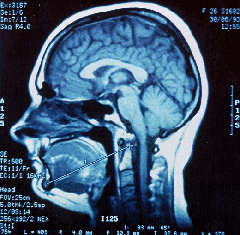
Figure 1. Magnetic resonance (MR) 'slice'
from the scan of a head |
In theory,
tissue depths can be 'stripped out' from such images by a cunning algorithm which can recognise the
outside of the head (i.e. when the black background values suddenly jump to the white values of the
soft tissues of the face) and the inside (i.e. when the white values of the soft tissues of the face
suddenly jump to the grey or black value of the bone and cartilage of the skull). Developing such a
computer program, and applying it to collect tissue-depth data from volunteers of both sexes and of
various ages, builds, and ethnic groups is likely to be a major long-term project. Whilst MR imaging
should make data collection easier, it suffers from one disadvantage in comparison to ultrasound --
MR scanning is carried out with the subject lying down. Further mathematical transformation of the
data may be required to convert a lying face (so to speak) to a sitting one.
Accessibility and flexibility in forensic facial reconstruction
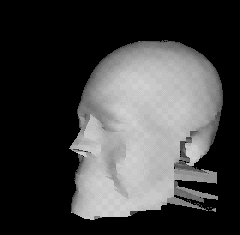
Figure 2. 40×40 co-ordinate VRML image of a forensic facial reconstruction
(appropriate browser plug-in or external viewer required) |
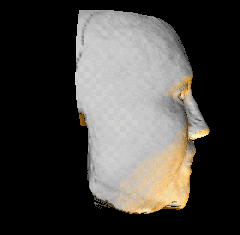
Figure 3. 151×151 co-ordinate VRML image of an archaeological facial reconstruction with a point
light source added
(appropriate browser plug-in or external viewer required) |
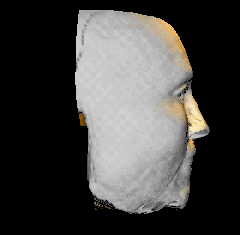
Figure 4. 151×151 co-ordinate VRML image of an archaeological facial reconstruction with the point light source in a different position
(appropriate browser plug-in or external viewer required) |
The Internet is the obvious medium within which to develop an internationally accessible service for
forensic facial reconstruction. Virtual reality modelling language or VRML (Ames, et al.
1997) -- the recognised standard for 3-D on the Internet -- is the appropriate file format. We have
been able to convert scanned 'plastic' reconstructions to VRML images for display on the Internet. To
view VRML images you will require a VRML browser 'plug-in'. An Internet search will reveal a
variety of such products. We encourage the reader to download the latest version of
Cosmo Player® from Silicon Graphics. (Instructions are provided.) |
When you have downloaded
your VRML browser you will be able to view a variety of facial reconstructions. Figures 2 and 3
illustrate the difference between images generated at 40×40 and 151×151 co-ordinate matrix
resolutions, respectively. Figure 3 also demonstrates the results of incorporating a point light source
into the scene by means of a 3-D VRML editor and Figure 4 shows the light source at a different
position.
Our most productive recent research has been directed at methods for interactively changing the
facial appearance to correspond to the processes of fattening and ageing of the face, and to begin to
address the difficult problem of facial appearance and ethnicity. Simulation of ageing and fattening of
the face has been achieved by using standard plastic reconstructions of the young and old and thin and
fat extremes. Once captured in digital form using a 3-D scanner (see Evison 1996), the
files can be translated into VRML format. The coordinateInterpolator node of VRML permits a
VRML scene subsequently to be constructed, in which the image of the face interpolates or 'morphs'
between the young and old (Figure 5) or thin and fat (Figure 6) extremes. A colour approximating to
'white' skin was rendered using a VRML editor and the degree of 'faceting' was similarly reduced
(cf. Figure 2). |
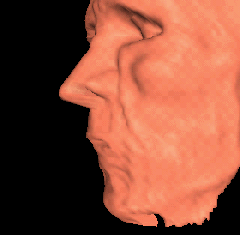
Figure 5. Using the coordinateInterpolator node of VRML to morph between young and old
reconstructions
(appropriate browser plug-in or external viewer required) |
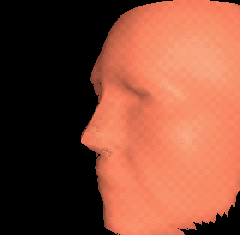
Figure 6. Using the coordinateInterpolator node of VRML to morph between 'thin' and 'fat' reconstructions
(appropriate browser plug-in or external viewer required) |
The existence and nature of any relationship between ethnic identity and biological characteristics
has been the most controversial and ill-used topic in anthropology. The issues involved are worthy of
detailed consideration beyond the scope of this article. Suffice to say, we reject the existence of
biological races in the human species. Race is a social construct and, since the term is entirely
misleading, it is one which anthropologists should take the lead in abandoning. We believe, however,
that a certain small number of biological characteristics are sometimes more frequent in some ethnic
groups than others, and that it may therefore sometimes be possible to estimate which ethnic group a
deceased individual is more likely to have identified with or been identified as. |
We also believe that
human groups have historically, and almost universally, undergone a process of genetic admixture
and that this process continues apace in the present. People are not stereotypical biologically, and
many people exist outside the main ethnic categories. Debate continues in the black community as to
whether a person of mixed ancestry has a 'black' identity or a 'mixed' identity -- or, conceivably, a
'white' identity.
How should one approach facial reconstruction from a skull which exhibits a balance of features
some of which are more common in black and some in white populations? Such a skull would not be
unexpected in groups identifying themselves as 'black', 'mixed', or 'white'. Which tissue depth data
set should we use and with what complexion should we render the finished reconstruction?
Computerisation may help us here in that it enables us to interpolate or morph between the various
options. Figure 7 illustrates one such example. An archaeological skull exhibiting features common in
both white and black populations was classified by physical anthropologists as '?Negroid'.
|
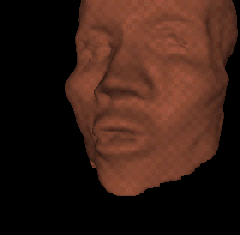
Figure 7. Using the coordinateInterpolator and colorInterpolator nodes of VRML to morph between
'black' and 'white' reconstruction
(appropriate browser plug-in or external viewer required) |
Historical
records associated with the site indicated that one 'foreign' and one 'Costa Rican' individual may
have been present in the cemetery from which the skull was recovered. The selection of possible
ethnic identities attributable to this individual is large and might include 'African', 'British', 'White',
'Latin', 'Caribbean', etc. There is no reason to assume that the individual was particularly light-skinned or dark-skinned either. In this example, casts were taken from the archaeological skull and
reconstructions carried out using published 'white' and 'black' tissue depths. The faces were scanned
into the computer and a VRML file constructed, in which the face appears to morph between the
white and black means. At the same time, the skin surface interpolates between light and dark
colourings. Whilst there is no reason to assume a simple correlation between tissue depths, skin colour,
and ethnic identity, such a model offers a range of likely outcomes, some of which will offer a greater
resemblance to the individual during life. Ethnicity apart, there is scope for considerable further work
on the computer simulation of skin colour and texture in facial reconstruction.
Issues in archaeology
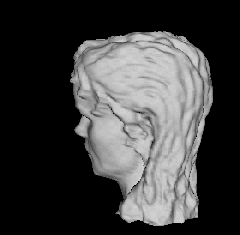
Figure 8. VRML image of a plastic reconstruction of the priestess from Anemospilia, constructed by
Richard Neave
(appropriate browser plug-in or external viewer required) |
Whilst our emphasis is on the application of computerised 3-D facial reconstruction in the forensic
field, the method will clearly be amenable to applications within archaeology. Although public
interest in facial reconstruction is strong, facial reconstruction is almost totally ignored in academic
archaeology. A number of factors may contribute to this situation. The misuse of anthropometry by
racial anthropologists is an issue easily raised in criticism of facial reconstruction, especially in
contexts where an estimation of ethnicity is being attempted. The importation of 'science wars' from
US campuses may also contribute to suspicion of another scientific technique being applied in
archaeology. |
Ironically, facial reconstruction specialists are probably the only artists in archaeology
who are keen to emphasise that their work does have a scientific basis! The novelty and technological
complexity of computerised 3-D facial reconstruction may also seem daunting to some. Fortunately,
public interest in facial reconstruction is a factor recognised by archaeological program makers and
cultural resource managers. The ability of a thoughtfully presented facial reconstruction to create
empathy with someone who may have lived many thousands of years ago would seem to be a tool of
unique value in archaeology, even, or perhaps especially, in 'social' archaeology -- an observation
which may have passed most social archaeologists by. It will be clear from the VRML images we have
presented here, however, that considerable refinement will be required before computers can be used
to present images as attractive as those produced by the sculptor (Figure 8, courtesy of Mr. Richard
Neave).
Acknowledgements
We thank Andrew Chamberlain for making skeletal material available for analysis and Mandy
Holmes for work on facial reconstruction and the fattening of the face. We thank Richard Neave for permission to reproduce the reconstruction of the priestess from Anemospilia in VRML. This project is supported by the
UK Home Office.
References
Copyright © M. Evison, O.M. Finegan, and T.C. Blythe 1998

















Copyright © assemblage 1998

























